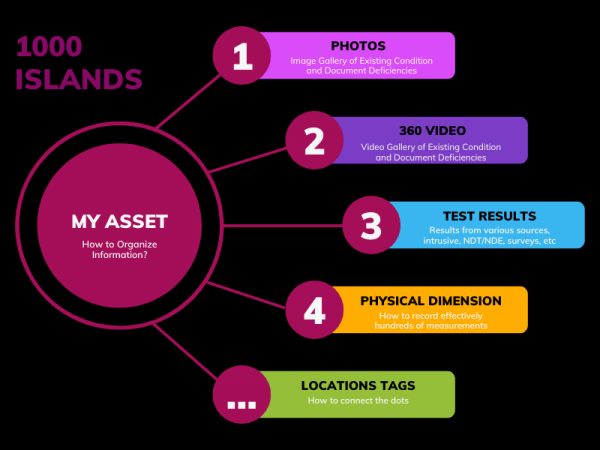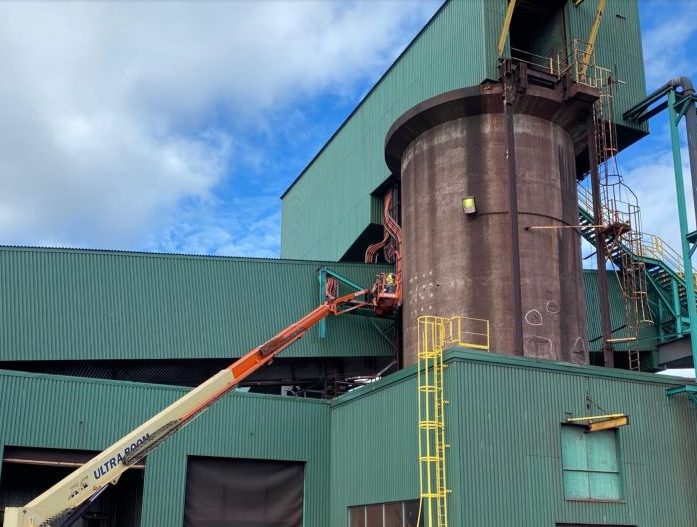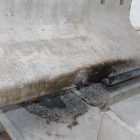In this article, we discuss how digital solutions such as 360 Cameras, LiDAR, and Digital Inspection platforms can help structural engineers in reducing the inspection timeline, enhance the reliability and accuracy of inspection workflow, and minimize the data processing and analysis timelines.
What is Digital Inspection?
Digital Inspection for concrete structures has been around the corner for a few years now. However, with the recent advancements in portable electronic devices such as iPads, smartphones, 360 Cameras, and intelligent inspection platforms, the landscape of this field has gone through a significant transformation, and all for Good!
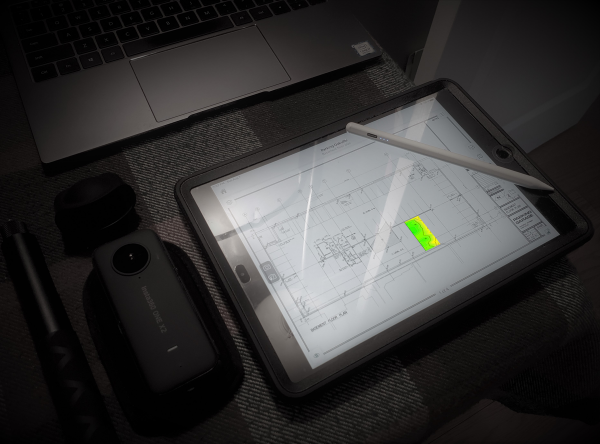
These technologies allow for more precise data collection, data management, and reporting. The rise of App-based platforms have changed the inspection workflow, while the 360 Cameras allow for far better documentation, and recording of visual deficiencies (even if the inspector miss them on site).
Digital Inspection revitalizes the older inspection protocols which needed significant field documentations, preparation of checklists, data quality checks.
Limitations of Traditional Inspection Methods
1- Papers, Papers, and more Papers
The traditional inspection heavily relied on pen and paper. Examples are:
- The inspection workflows,
- Checklists,
- Recording site observations,
- Proper documentation of the type, locations, and extent of defects.
This can make the entire process somewhat time-and-labour intensive.
2- Thousand Islands
The process of data collection in the traditional inspection methods is discrete. Each data comes from a different source, and often through different medium, such as Photos, Videos, Sensor measurements from Non-destructive Tests, Physical dimension measurements. Other observations, especially those of descriptive nature are generally recorded separately as inspector notes. Moreover, the inspector usually needs to hold on to a pile of papers (drawings). This will results in a long process of correlating and tagging information to the test locations. The more data there is to connect, the longer the process, and the more expensive the project will be for the end client.
3- Miss or Forget Details
When dealing with a relatively large asset, it is very easy for the inspectors to miss or forget inspection of certain areas, or elements.
4- Traceability and Archives
The inspection reports get lost from time to time. When maintenance management teams change, or when the asset management platforms change, there is a chance that inspection reports get lost (or at the very best, transferred incompletely).
Another problem with concrete inspection is that often the specifications of the equipment utilized in the inspection process are not documented properly. This makes the routine inspection process more challenging should someone decide to revisit some of the older reports. Such inconsistencies between periodic investigations by different inspection firms and different equipment are well reported.
Digital Inspection Solutions of Concrete Structures
1- iPads and Tablets
iPads have set a new standard in UI/UX – Apps have made it easy to document observations on-site. They are portable and bring a whole new level of connectivity and seamless integration with other documents. The Cloud Services have provided instant backup capabilities and data sharing.
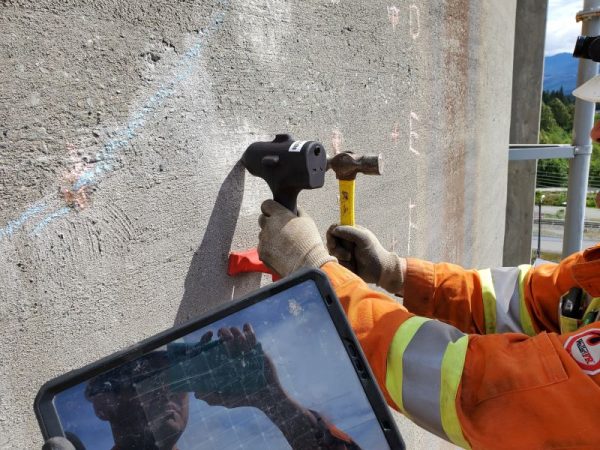
2- 360 Cameras
360 Cameras can be easily used for rapid, accurate and cost-effective inspection of key structural components in bridge inspection, or inspection of parking garages. 360 Capture reduces the inspection timeline and provides an invaluable archive for engineers’ review in the office. By eliminating the need to go back to the job site, 360 cameras provide can serve as an invaluable tool for engineers.
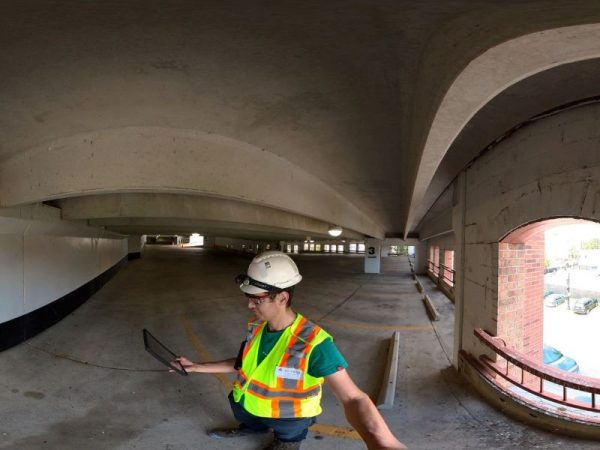
3- Drones – Fly Above and Beyond
Drones have already changed how we assess element-level conditions in large assets, such as offshore oil and energy platforms, refineries, bridges, roads, and so on. Drones can easily be programmed to:
- Reach out to remote areas and components without any special setup.
- Perform rapid screening of critical components
- Evaluate the condition of coatings and paint
- Assess the surface condition of concrete
- Inspection of concrete cracks
Capabilities of Digital Inspection
1- Less Paper, or Perhaps, No Paper at All!
A digital inspection enables engineers by minimizing/eliminating paper notepads. A digital workflow allows for integrating all existing inspection reports, drawings, and photos into one single space. All notes can be taken directly on the iPad screen, assigned to its proper components, and location.
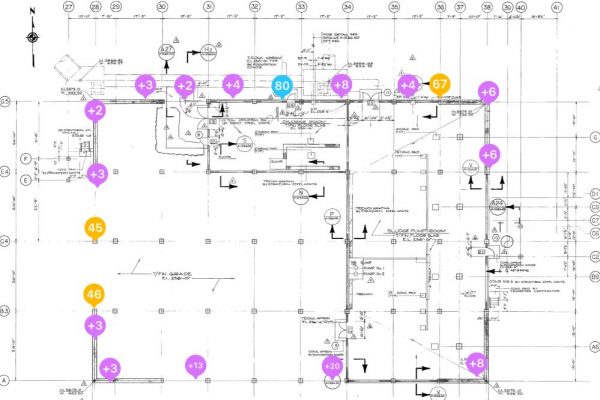
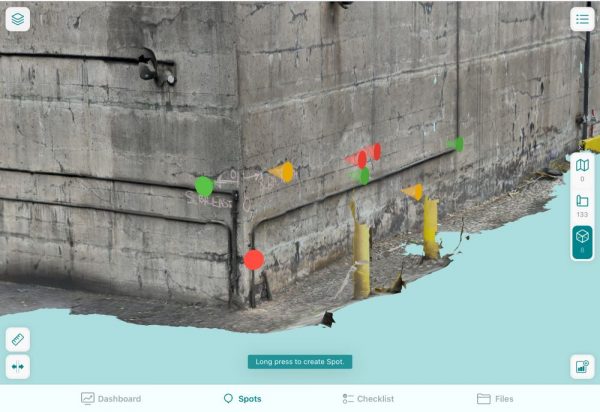
2- Seamless Integration of Data
The process of data collection in the traditional inspection methods is discrete. Each data comes from a different source, and often through a different medium, such as Photos, Videos, Sensor measurements, and Physical dimension measurements. Other observations, especially those of descriptive nature are generally recorded separately as inspector notes. Moreover, the inspector usually needs to hold on to a pile of papers (drawings). This will results in a long process of correlating and tagging information to the test locations. The more data there is to connect, the longer the process, and the more expensive the project will be for the end client.
3- Cloud Backup and Share
A digital inspection report, including test results, drawings, and measurements is easily traceable and less prone to being lost.
Most data, including inspection results, test results, and physical dimensions, as well as the geo-location of the test stations can be synchronized with serves in real-time, making data loss a thing of the past.
Final Call on Digital Inspection Tools
Digital inspection is still a long way from becoming the market standard in many industries and sectors.
Most of the existing asset management platforms are still working based on their old models. But the change is coming. As technology becomes more affordable, we will see a lot of asset owners switching to digital inspection. One thing we can agree on: The future of structure inspection and assessment is Digital.
